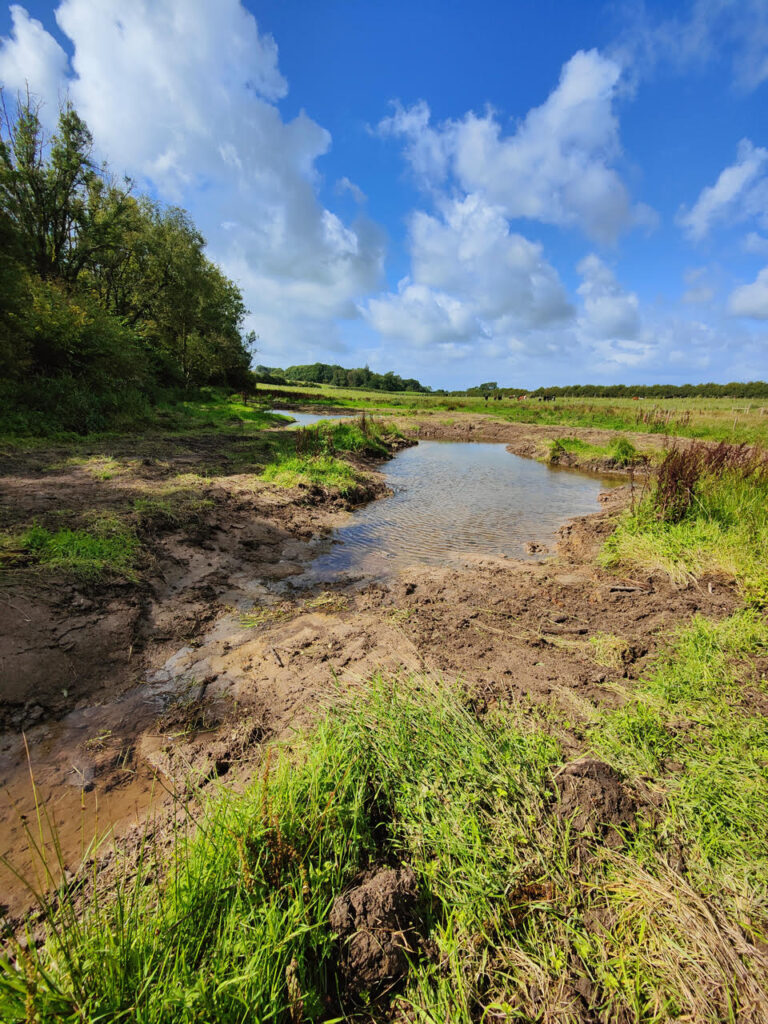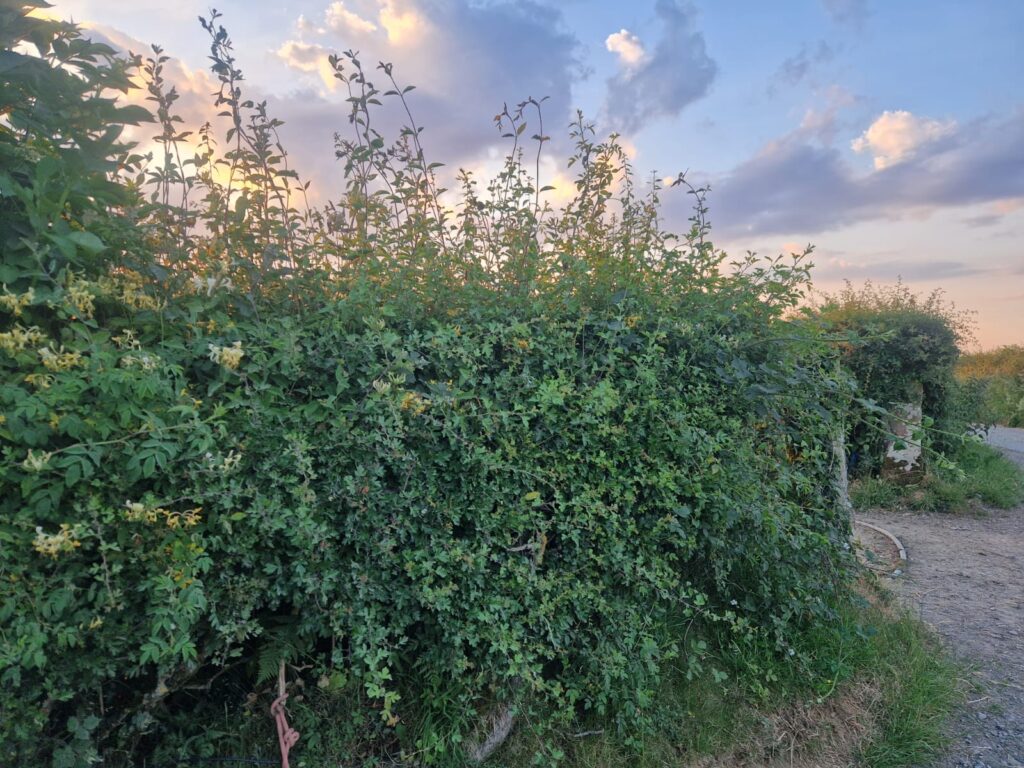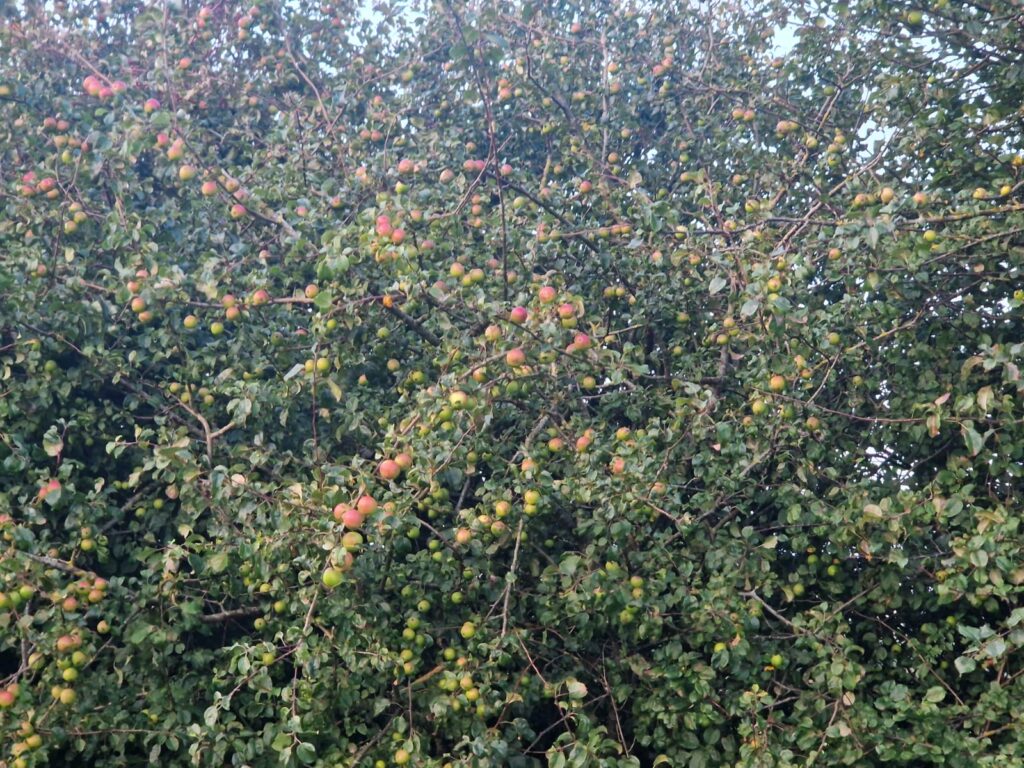Mark and Jen Lee, Park House Farm, Cumbria 1/3
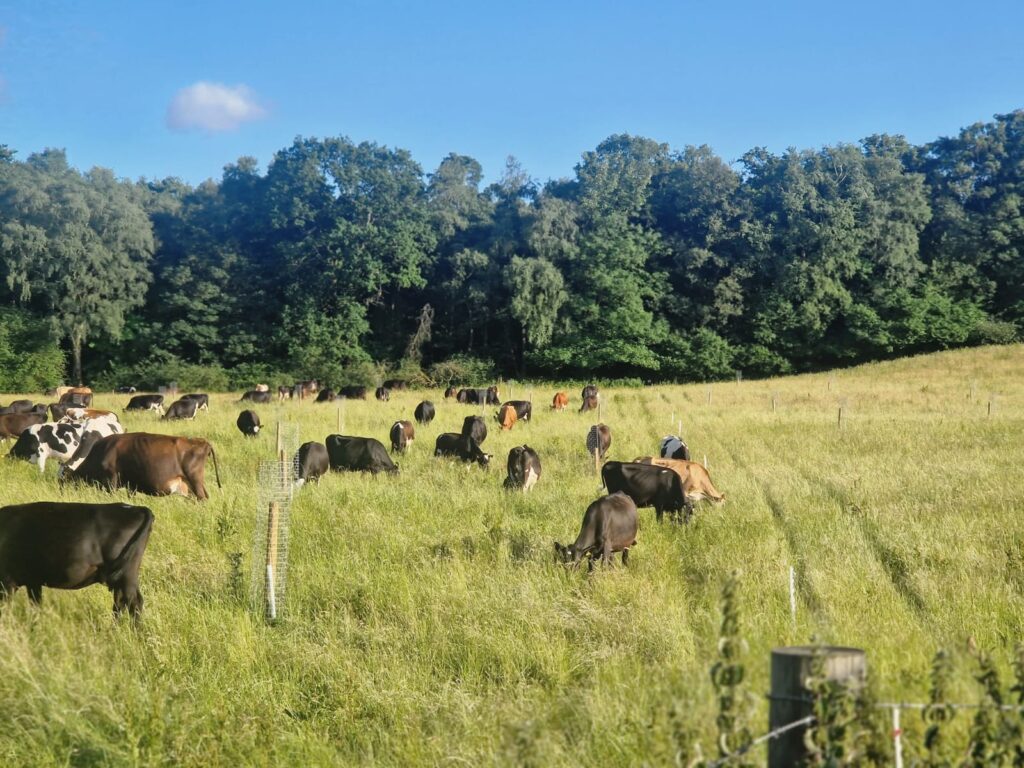 (Photo: mob grazing cows on the pasture)
(Photo: mob grazing cows on the pasture)
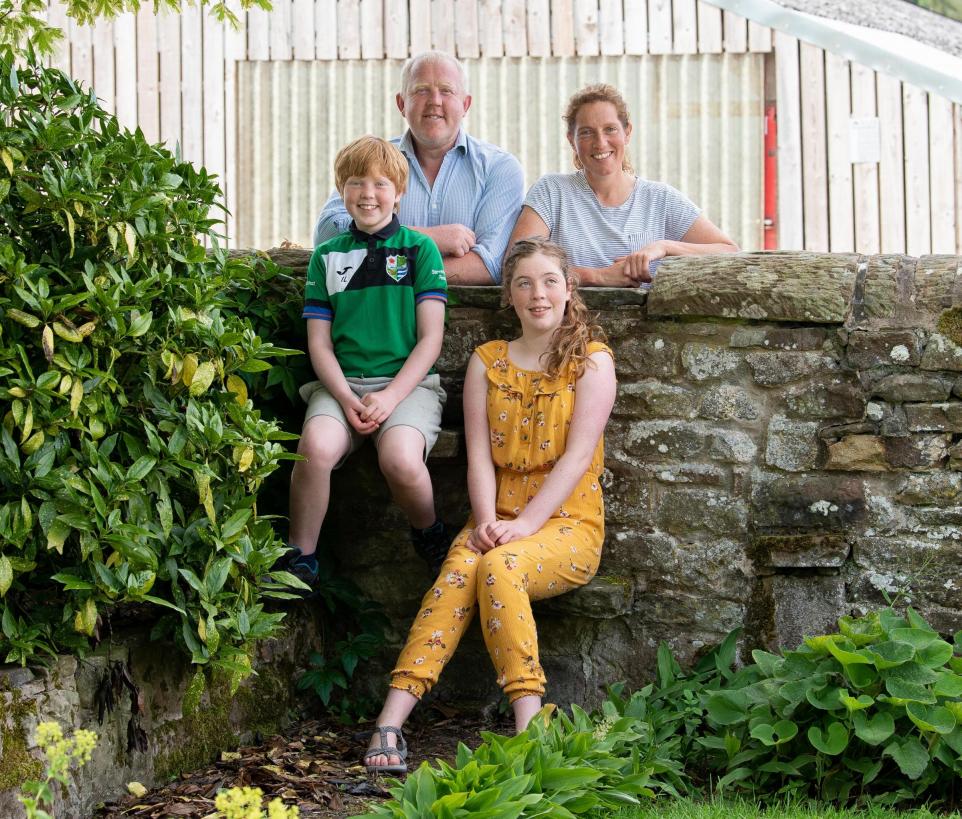 (Photo: Lee family)
(Photo: Lee family)
Tell us about your farm – location, size, altitude, climate, soils, enterprises, organic/Pasture for Life/other status etc.
Our farm is 350 acres of permanent pasture, ancient woodland and wooded pasture, situated between the Northern Fells and the Solway Firth in North West Cumbria. It lies approximately 400 feet above sea level with a mixture of sandy loam and clay soils. The gulf stream brings plenty of wet weather throughout the year but also a degree of warmth which provides ideal growing conditions for the diverse species in our pastures. We have 220 Jersey x Friesian cows and followers on a spring block calving system, where we rotationally graze set paddocks for 300 days of the year. The farm is Organic and Pasture for Life certified and now produces cheese and gelato which we sell direct to the public and through other retailers.
Give us a picture of the biodiversity on your farm – essentially above ground (but reference to below ground if relevant) – both flora and fauna.
The farm is an ancient deer park with an old pebble and rock boundary still standing on the southern part of the farm. This has historically led to more woodland within the farm being preserved. Stretches of ancient woodland line the Cockshot Beck, which is the main water course that runs the length of the land East to West. The majority of the woodland is native Oak, Ash, Sycamore and Willow with additional species of black Walnut, Poplar, Alder and Beam being planted last year.
The fields are a muti-species mix of grasses, clovers and other legumes which are essential to fix the nitrogen in our 40-day rotational system. Most are classified as permanent pasture and have been overseeded since our conversion to organic due to the previous monoculture of ryegrass not meeting the nutritional needs of the pasture-fed herd.
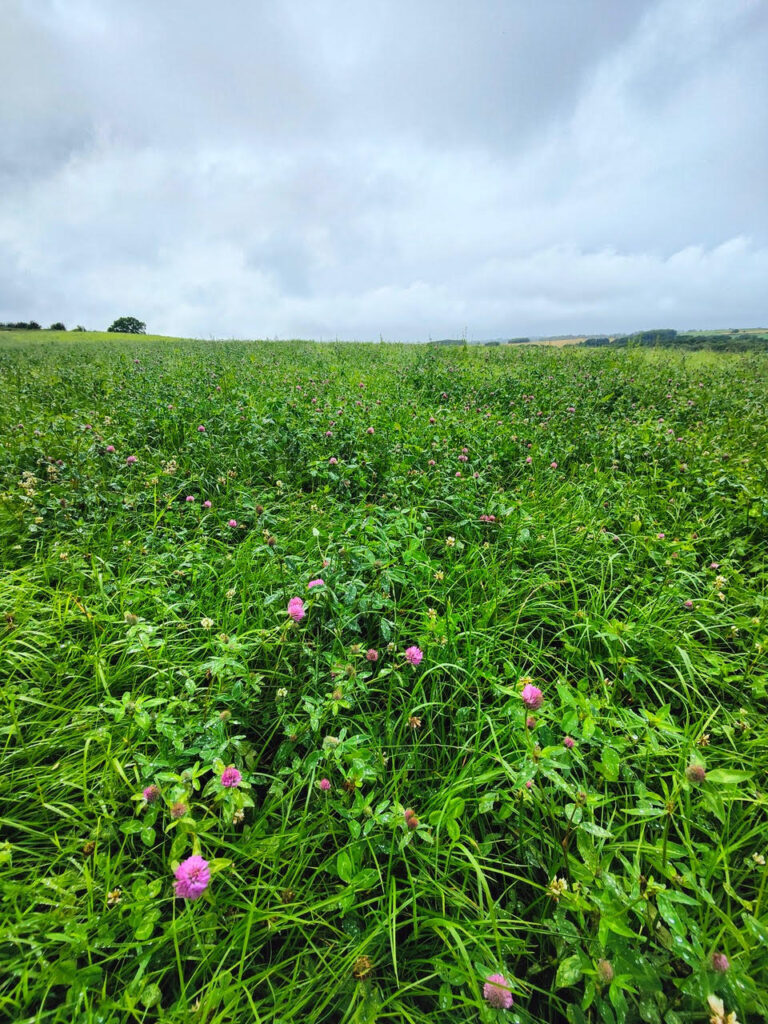
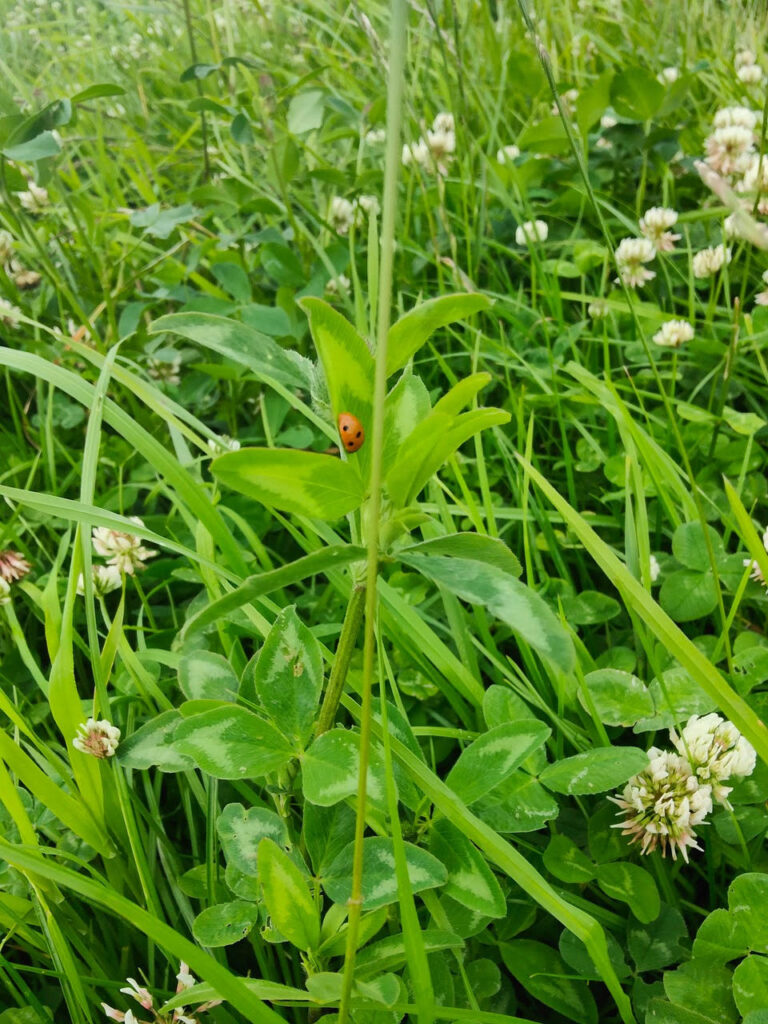
4km of native hedgerows have been planted over the past 5 years to split the larger fields into smaller grazing paddocks and interconnect the blocks of woodland throughout the farm. Deer, Badger, Hare, Foxes and Rabbits are commonplace, together with recent sighting of Curlew which were once common on the farm but which had not been sighted for a decade. Three species of bat have been identified along with many birds including Heron, Swallows, Gold finches, Thrush, Sparrows, Buzzards, Sparrow Hawks, Barn Owls, Little Owls and Kingfishers.
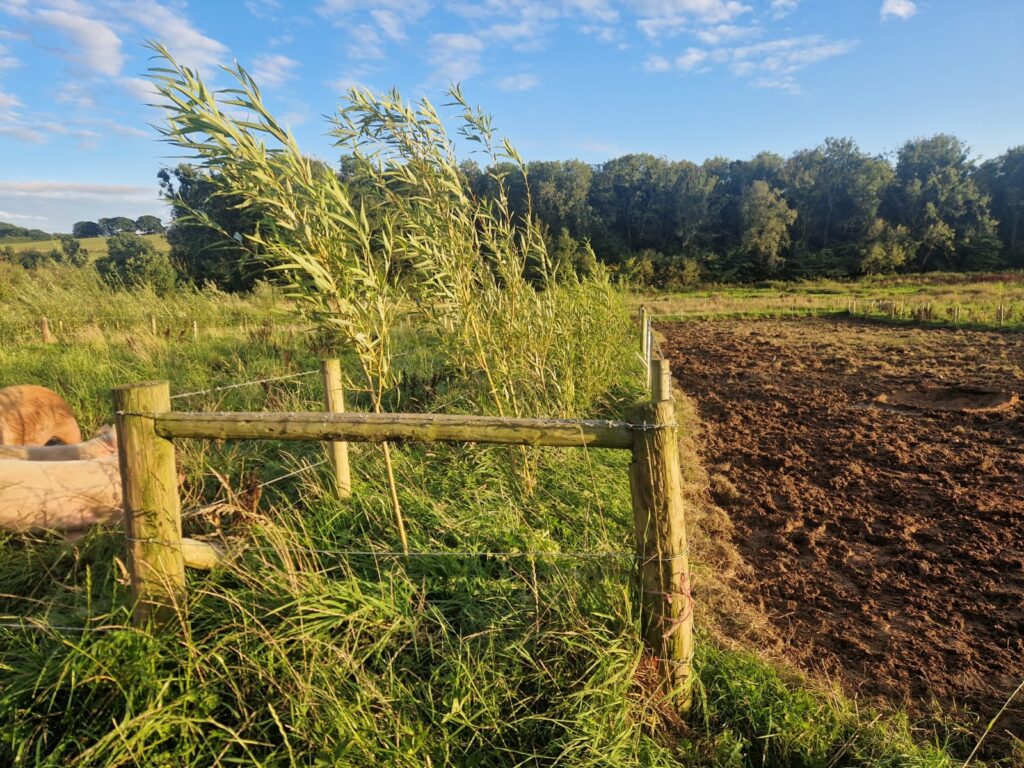
What you do to encourage this biodiversity?
To encourage biodiversity we mob graze the cows, maintaining at least 40 days between grazings to allow complete regeneration of the sward. We have begun a wooded pasture project which should cover over 100 acres, creating a very good habitat for multiple species. Field corners have been fenced off and several large scrapes and ponds have been dug to encourage some wetland bird and reptile species to thrive on the farm. 4km of hedgerows have been planted with a further 2km planned for the next year. No artificial or chemical inputs have been applied to the soil for the last 6 years, resulting in a huge increase in dung beetle activity. We have operated a no- till policy on the farm since 2017 and aim to grow soil as the building block underlying the farms biodiversity and profitability.
